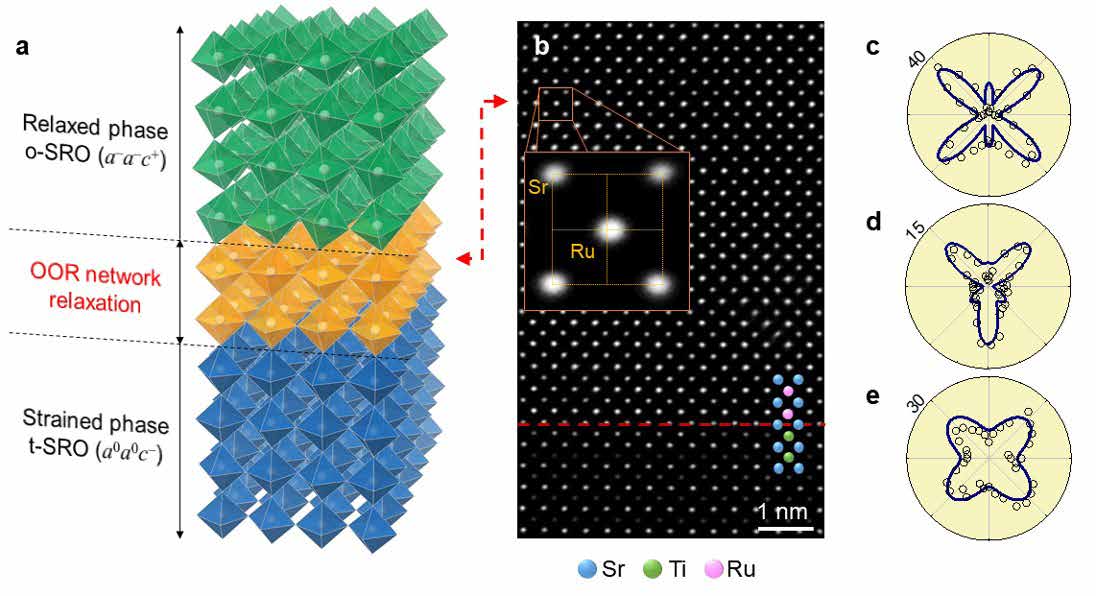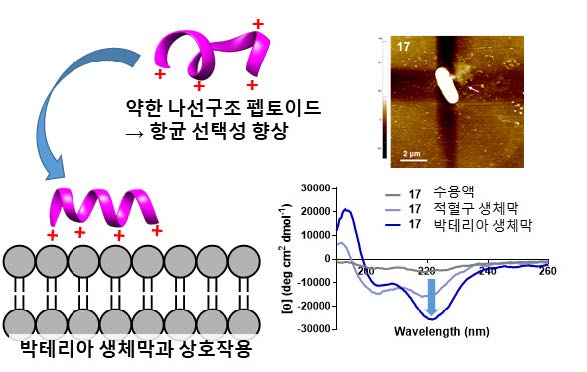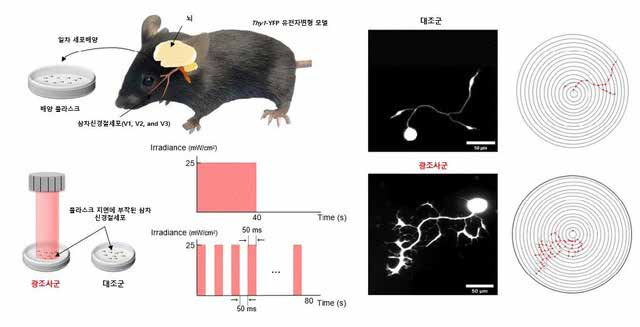01
Discovery of Metals Acquiring Electric Polarizability by Compressive Stress Relief
The research team led by Professor Jongseok Lee of the Department of Physics and Photon Science of GIST discovered that metal materials can acquire electrical polarizability due to compressive stress relief in transition metal oxide thin films. A high-capacity data storage device with a high degree of integration or a battery with high storage capacity may be realized by applying this to solid state circuitry. The electrical properties of a material can be classified into metal/non-metal depending on the degree of electrical conduction within the material. Also, non-metals are classified into polar and non-polar non-metals depending on whether they can have an electrical polarizability of an anode (+) or a cathode (-). Meanwhile, a metal material through which the electricity flows cannot have electric polarizability in general because free electrons inside the metal block electrical polarization fundamentally. The research team focused on the stress existing in the material in the thin film state and the relief process of the stress. Also, the team confirmed that the polar metal state can appear at the level of the atomic layer’s thickness during the stress relief process in the strontium ruthenium oxide (SrRuO3) thin film. The team successfully observed the following by using the second-harmonic wave and the scanning-transmission electron microscope; the structure deformed by stress and the structure lumped due to the relief of the stress coexist in a strontium ruthenium oxide thin film under compressive stress while spatially separated, and the polar triclinic structure with broken central symmetry is stabilized during the stress relieving process.
02
Development of Peptoid-based Antibiotic Killing Super Strong Bacteria and Clarification of the Principle of Antibacterial Action
A joint research team led by Professor Jiwon Seo of the Department of Chemistry, GIST, and Professor Song-yeop Shin of Chosun University developed a peptoid-based antibiotic and clarified the principle of its antibacterial action. The results of the research are expected to show the possibility of new antibiotics development using antibacterial peptoids that structurally mimic antibacterial peptides, which are the innate immune molecules of living organisms. With the abuse of antibiotics and pharmaceutical companies neglecting the development of new antibiotic drugs over the past 30 years, bacteria have developed a resistance mechanism against existing antibiotics. Multidrug resistant bacteria against various antibiotics became a threat to human health worldwide. To this end, there have been active worldwide researches on antimicrobial peptides and their derivatives, optimized through prolonged evolution in nature. In particular, peptoids, the artificial structural mimetics of peptides, have high resistance to enzymes that break down peptides and high in-vivo stability, unlike natural peptides, drawing a lot of attention as a new antibiotic. The antimicrobial peptoid, developed by the team, enhanced the selectivity for bacteria by controlling the helix structure and are active against a wide range of gram-positive and gram-negative bacteria, including multidrug resistant bacteria. Also, unlike natural peptides, it exhibited high stability against metabolic enzymes inside the body and is expected to revitalize the research on the development of multidrug resistant bacteria treatments in the future.
03
Clue for Preventing Extreme Heat Buildup inside Car … Development of Environment-friendly Cooling Materials
A clue for preventing extreme heat buildup inside car due to greenhouse effect in an enclosed space was found. A research team led by Professor Young Min Song of the School of Electrical Engineering and Computer Science developed a structural body made of environment-friendly material that will lower the temperature inside an enclosed space without external power supply. It is expected to become a starting point for its applications such as the vehicle roof material to maintain a pleasant indoor temperature, the heat dissipation element to prevent heat generation from electronic devices, and the construction of buildings designed to save cooling energy. It is an approximately 500 μm multi-layer panel, comprised of polymer (PDMS), silver (Ag), and quartz (SiO2), respectively from the top, designed to give a cooling effect by covering the space to reduce the heat from above. Of course, there are already cooling methods that use the radiation phenomenon, which is a natural behavior of releasing heat. However, they could only cool the surface on which they are mounted as they release the heat from only one side and could hardly dissipate the heat from the space. The cooling material developed absorbs (broad radiation) the heat inside the enclosed space in contact with the quartz structure at the bottom, and the polymer structure above it radiates in the form of electromagnetic waves while preventing this heat from heating the surrounding air (selective radiation) to lower the temperature of the enclosed space. According to the measurement taken in an actual vehicle simulation environment, this material can lower the temperature of 'inside' the vehicle by 4℃ from 43℃ down to 39℃ while the conventional passive radiation cooling material cools only the 'surface.'
04
Suggesting Phototherapy Potential for Dry Eye due to Corneal Nerve Damage
A research team led by Professor Euiheon Chung of the Department of Biomedical Science and Engineering suggested the potential of the noninvasive photo bio control effect based phototherapy for promoting the growth of damaged trigeminal ganglion cells and regenerating peripheral nervous system by using near-infrared ray laser. Following the increasing number of patients undergoing LASIK and LASEK operations, the incidence rate of dry eye caused by the side effects of keratectomy is also increasing rapidly. LASIK corrects vision by incising the cornea and the nerve cell of the cornea may not be regenerated during the recovery and the damage to the peripheral nerves, which responds to external environment. The team induced the regeneration of damaged trigeminal ganglion cell, which is one of the direct causes of dry eye syndrome, through a near-infrared laser, and studied its therapeutic effect through the measurement and analysis of cell activities. For this, trigeminal ganglion cells were collected from genetically modified mice and cultured on plates primarily, and the cultured neurons were irradiated with various continuous and pulsed laser beams. As a result, the optimal optical irradiation conditions for regenerating damaged peripheral nerve cells was found. In this process, a morphological information analysis method was selected and applied for quantitative analysis of nerve cell regeneration.
 01
01
 02
02
 03
03
 04
04
